Disclosure: This article contains affiliate links. We may earn a commission from purchases at no extra cost to you, which helps our travel content.
¡Hola amigos viajeros! When most tourists think of Ecuador, they picture the Galápagos Islands or Quito's colonial charm. But let me tell you—Guayaquil, Ecuador's largest city and bustling port, holds fascinating historical secrets that most travelers completely overlook! As someone who grew up between the precise efficiency of Frankfurt and the colorful warmth of my mother's Mexican hometown, I've developed an eye for destinations that blend cultural richness with practical accessibility. During my recent weekend exploring Guayaquil with my rafting buddies, I discovered historical sites that tell incredible stories without breaking the bank. Ordnung muss sein (there must be order) as we Germans say, so I've organized this guide to help families experience Guayaquil's hidden history safely, efficiently, and affordably. Grab your comfortable shoes and water bottles—we're about to explore Ecuador's historical treasures hiding in plain sight!
Las Peñas: The Colorful Birthplace of Guayaquil
My safety inspector instincts immediately appreciated Las Peñas—Ecuador's oldest neighborhood and the birthplace of Guayaquil. This vibrant hillside district survived numerous pirate attacks and devastating fires throughout its 400-year history, yet remains standing as a testament to Ecuadorian resilience.
The neighborhood features 444 numbered steps leading to the top of Santa Ana Hill, and I'll admit I tracked our progress meticulously (occupational habit!). Each wooden house along the way is painted in bright colors that reminded me of visits to my mother's hometown in Mexico. What makes Las Peñas special isn't just its historical significance but how accessible it is for families with children of all ages.
While most tourists rush through on their way to the lighthouse at the top, I recommend spending at least two hours exploring the narrow streets. My favorite discovery was finding the house where Ecuador's famous poet Medardo Ángel Silva once lived—now a small museum that many visitors miss completely. The wooden architecture throughout Las Peñas showcases a fascinating blend of Spanish colonial and indigenous craftsmanship.
As I climbed the steps with my hydration pack, I couldn't help but think how this neighborhood represents Ecuador's complex history—a place where Spanish colonizers, indigenous peoples, pirates, and modern Ecuadorians all left their mark.

💡 Pro Tips
- Start your Las Peñas exploration early morning (before 10am) to avoid both crowds and midday heat
- The neighborhood is generally safe, but keep valuables secure in a cross-body bag, especially when taking photos
- Look for house #1 near the bottom of the hill—it's one of the oldest structures in the entire city
La Rotonda: The Overlooked Monument of South American Liberation
Just steps from the popular Malecón 2000 riverfront promenade stands La Rotonda—a monumental tribute to one of South America's most important historical moments that most tourists walk past without understanding its significance.
This impressive semicircular monument commemorates the 1822 meeting between Simón Bolívar and José de San Martín, the two great liberators who led independence movements across South America. Their strategic meeting in Guayaquil determined the future of several South American nations.
What fascinated me most about La Rotonda wasn't just its historical importance but how it serves as an impromptu classroom. During my visit, I watched an Ecuadorian grandfather explaining the monument's significance to his grandchildren, pointing out details in the bronze statues that tell the story of Ecuador's path to independence.
As someone who grew up between two distinct cultures, I appreciate how this monument represents the complex relationships between different South American independence movements. The site offers excellent informational plaques in both Spanish and English—perfect for families wanting to incorporate educational elements into their travel.
For the best experience, I recommend visiting around sunset when the monument is beautifully illuminated and the river breeze makes the heat more bearable. My travel binoculars came in handy for spotting details on the monument and watching river activity from this excellent vantage point.
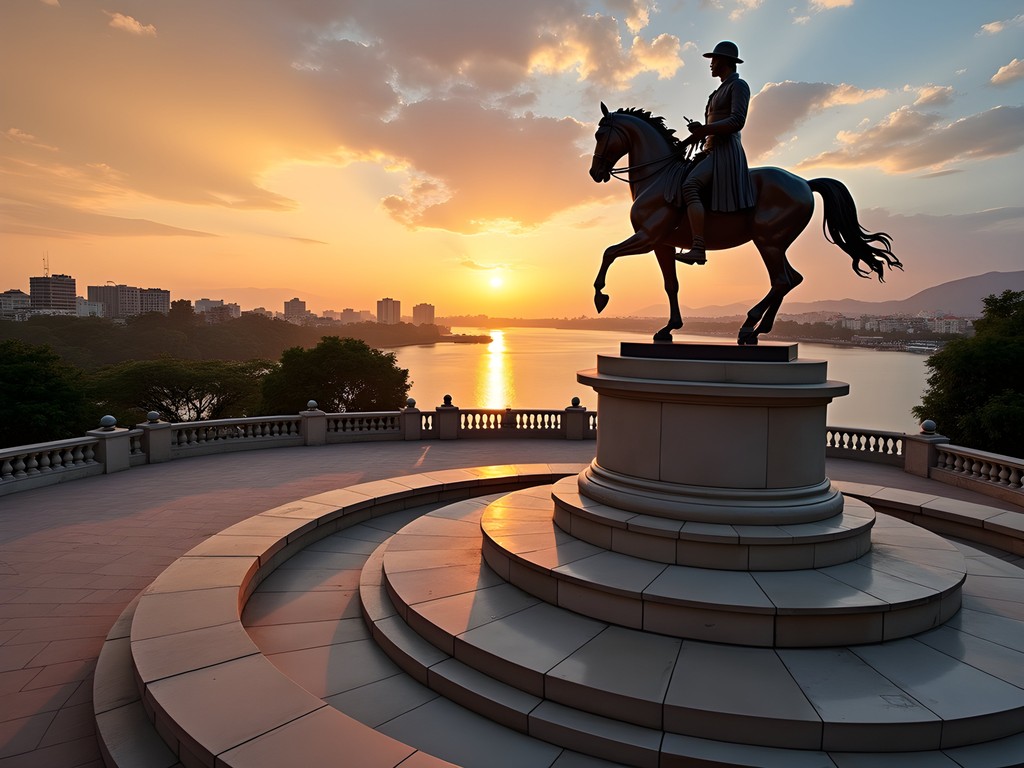
💡 Pro Tips
- Visit around 5:30-6:30pm for beautiful golden hour lighting on the monument and comfortable temperatures
- The nearby benches make this a perfect spot for a brief history lesson with children
- Look for the subtle differences in how each liberator is portrayed—their positioning tells a political story
Museo Municipal: Treasures Hidden in Plain Sight
The Museo Municipal of Guayaquil might not have the grandeur of Europe's famous museums (and as a Frankfurt native, I've seen my share!), but what it lacks in size it makes up for in fascinating artifacts and—best of all for budget travelers—free admission.
Located in the city center near the Metropolitan Cathedral, this often-overlooked museum houses pre-Columbian artifacts, colonial-era paintings, and exhibits on Guayaquil's development as Ecuador's economic powerhouse. What impressed me most was the museum's collection of indigenous Valdivia culture artifacts, some dating back 5,500 years!
Mein Gott, the safety protocols in me was both impressed and slightly concerned by how close visitors can get to priceless historical items. Unlike European museums with their strict barriers, here you can examine ancient pottery and colonial weapons up close—making history tangible for children and adults alike.
During my visit, I was fortunate to catch a temporary exhibition on traditional Ecuadorian transportation methods throughout history. As someone who's worked in river rafting safety, I was particularly fascinated by the display on historical river navigation techniques used on the Guayas River.
The museum offers excellent guided tours in Spanish, but English speakers should bring a good translation app. I used my phone with wireless earbuds to listen to audio translations without disturbing other visitors—a museum etiquette tip I always follow.
Make sure to check out the second-floor balcony for a lovely view of Seminario Park across the street, where you can spot Guayaquil's famous iguanas after your museum visit!

💡 Pro Tips
- Visit Tuesday-Thursday for the smallest crowds
- Photography is permitted without flash—perfect for documenting historical items for curious kids
- Ask about the special children's guided tours offered on weekend mornings (in Spanish)
Cementerio General: An Open-Air Museum of Sculptural Masterpieces
Now, I know what you're thinking—a cemetery isn't typically on family vacation itineraries. But trust my multicultural perspective on this one: Guayaquil's General Cemetery is more like an open-air sculpture museum than a somber burial ground. It reminds me of the beautiful European cemeteries I grew up visiting during Allerheiligen (All Saints' Day) in Germany, combined with the colorful celebration of remembrance I experienced in Mexico.
What makes this historical site special is the incredible white marble mausoleums and sculptures, many created by Italian artists in the early 20th century when Guayaquil was experiencing an economic boom. The cemetery tells the story of Ecuador's social history through its elaborate memorials to past presidents, poets, and prominent citizens.
As a safety professional, I appreciated the cemetery's well-maintained pathways and open design. The site is perfectly appropriate for respectful family visits, and children often find the elaborate angel sculptures and historical monuments fascinating rather than frightening.
My favorite discovery was the section dedicated to firefighter heroes—Guayaquil has suffered several devastating fires throughout its history, and the cemetery honors those who sacrificed their lives saving others. It's a powerful historical lesson about the city's resilience.
I recommend visiting in the morning when temperatures are cooler. Bring plenty of water and wear a sun hat as there's limited shade. The cemetery is quite large, so comfortable walking shoes are essential.
Remember that this is still an active cemetery—be respectful of any funeral services taking place and keep children from climbing on monuments.
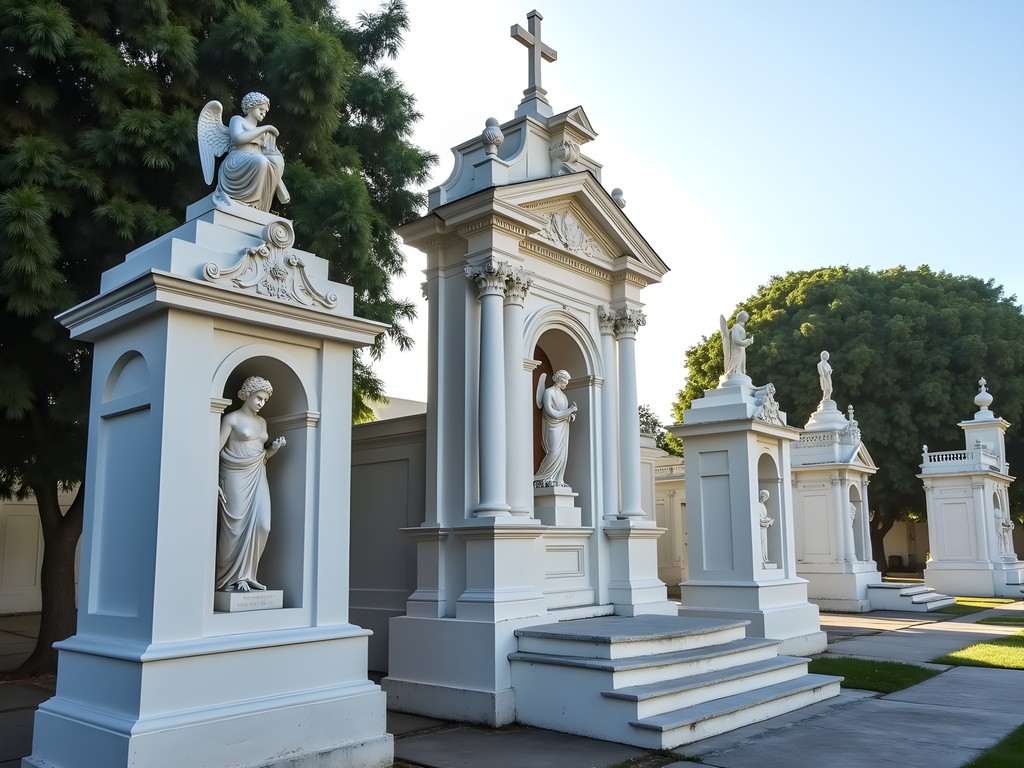
💡 Pro Tips
- Visit between 8-10am for comfortable temperatures and beautiful morning light on the white marble
- Pick up the free cemetery map at the entrance—it highlights the most historically significant memorials
- Look for the small museum near the entrance that explains the cemetery's history and notable residents
Fortín del Cerro Santa Ana: The Forgotten Pirate Defense
At the very top of Santa Ana Hill, beyond the lighthouse that most tourists visit, stands a fascinating historical site that many visitors completely miss: El Fortín, a reconstructed Spanish colonial fort that once protected Guayaquil from pirate attacks.
As someone who's worked in safety assessment, I was immediately drawn to analyzing this defensive structure and how it served its protective purpose. The fort offers spectacular 360-degree views of Guayaquil, the Guayas River, and surrounding areas—making it obvious why Spanish colonizers chose this strategic location.
What makes this site special for families is how it brings to life Ecuador's swashbuckling history of pirate attacks and colonial defenses. Children who might be bored by traditional museums often become captivated by the cannons, lookout points, and stories of pirates attempting to raid the city. It's like stepping into a history book!
The fort houses a small museum with historical weapons, maps, and information about famous pirates who targeted Guayaquil, including the notorious English privateer Thomas Cavendish who successfully sacked the city in 1587. I was fascinated to learn how these historical events connected to the European maritime history I studied growing up in Germany.
The climb to reach El Fortín is substantial—444 steps from the bottom of Las Peñas neighborhood—but well worth the effort. I recommend bringing a compact camera to capture the panoramic views and historical details without the weight of heavier photography equipment during the climb.
After exploring the fort, families can enjoy refreshments at the small café near the lighthouse. The fresh coconut water served in the coconut shell was exactly what we needed after the uphill journey!
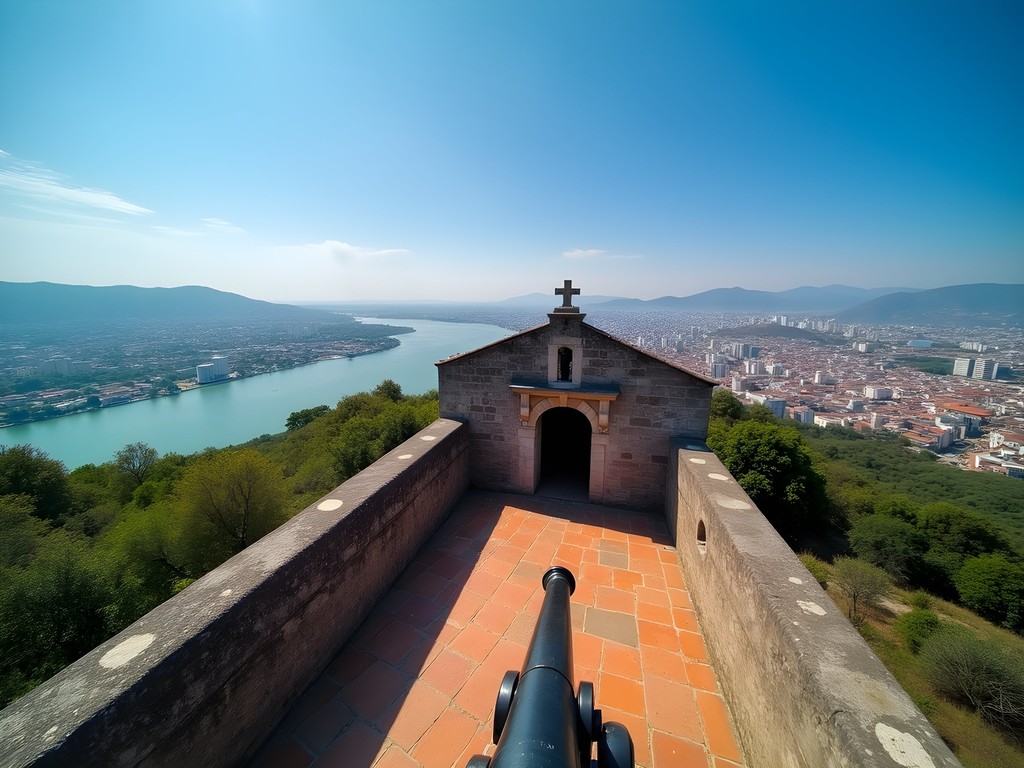
💡 Pro Tips
- Combine your visit with Las Peñas neighborhood exploration to make the climb worthwhile
- Visit on weekdays to avoid weekend crowds at the lighthouse and fort
- The fort area can be windy—bring a light jacket even on warm days
Parque Histórico Guayaquil: Living History in Three Zones
Located across the Guayas River in Samborondón, Parque Histórico Guayaquil is perhaps the most family-friendly historical site in the entire region—and surprisingly undervisited by international tourists. This expansive park combines history, wildlife, and cultural heritage in one well-organized location.
The park is divided into three distinct zones that tell different aspects of Guayaquil's history. As someone who appreciates Ordnung, I loved how logically everything was arranged!
First, the Wildlife Zone showcases Ecuador's native species in their natural habitats. As we walked through, I was reminded of conservation efforts I've seen in river ecosystems during my rafting safety work. The park focuses on animals native to Ecuador's coastal region, including several endangered species being protected through breeding programs.
Next, the Urban Architecture Zone features perfectly preserved and reconstructed buildings from Guayaquil's golden age (1880-1920). Walking through these historical structures—including a cocoa plantation house, customs office, and bank—feels like time travel. What impressed me was how interactive this area is for children, with period-costumed guides demonstrating traditional crafts and daily life activities.
Finally, the Traditional Countryside Zone recreates rural coastal Ecuador from the early 20th century, with working farms, traditional houses, and demonstrations of agricultural techniques. Having grown up visiting my mother's rural Mexican hometown, I felt an immediate connection to this authentic portrayal of agricultural heritage.
The park requires significant walking, so I recommend wearing comfortable shoes and bringing a insect repellent for the woodland areas. Plan to spend at least 3-4 hours here to fully appreciate all three zones.
For families, this park offers the perfect balance of education and entertainment. My safety inspector side appreciated the well-maintained pathways, clear signage, and excellent facilities throughout.

💡 Pro Tips
- Visit on weekdays to catch all the cultural demonstrations which sometimes have reduced schedules on weekends
- The park offers guided tours in Spanish—request an English-speaking guide when purchasing tickets if needed
- Bring cash for traditional snacks sold by vendors in the countryside zone—they're part of the historical experience!
Museo Nahím Isaías: Pre-Columbian Art in a Historic Bank
For my final hidden historical gem, I'm taking you to a place that perfectly represents Guayaquil's blend of economic power and cultural heritage: the Nahím Isaías Museum, housed in a former bank building in the city's financial district.
This museum holds Ecuador's most important private collection of religious colonial art alongside impressive pre-Columbian artifacts. What makes this site special is how it connects Ecuador's indigenous artistic traditions with the religious art that arrived with Spanish colonization—showing the fascinating cultural fusion that created modern Ecuador.
As someone who grew up between two distinct cultures, I was particularly moved by the exhibits showing how indigenous artists incorporated their own symbols and techniques into ostensibly Catholic religious paintings and sculptures. These subtle acts of cultural preservation tell a powerful story about resilience and adaptation.
The museum building itself is historically significant—a beautifully preserved example of early 20th-century Guayaquil architecture when the city was Ecuador's economic powerhouse. The original bank vault in the basement now houses the pre-Columbian gold collection, a clever repurposing that wasn't lost on my German appreciation for practical efficiency!
What makes this museum especially family-friendly is its manageable size. Unlike overwhelming larger museums, children can explore the entire collection without fatigue. The museum also offers excellent activity sheets that turn the visit into a historical treasure hunt for younger visitors.
I found the lighting inside quite dim to protect the delicate artifacts, so I was glad to have my reading glasses to read the informational plaques. If you wear glasses, don't forget to bring them!

💡 Pro Tips
- Visit between 2-4pm when local school groups are least likely to be present
- Don't miss the small garden courtyard on the second floor—it's a peaceful spot to rest between exhibits
- Ask about the special weekend workshops where children can try colonial-era art techniques
Final Thoughts
As we've explored these seven overlooked historical treasures, I hope you've discovered a different side of Guayaquil—one that goes beyond the typical tourist stops at the Malecón and Iguana Park. What makes these sites special isn't just their historical significance but how accessible they are for families on a budget. From the colorful wooden houses of Las Peñas to the colonial art treasures of Museo Nahím Isaías, Guayaquil offers a weekend of discovery that connects visitors to Ecuador's fascinating multicultural heritage. As someone who navigates between different cultural traditions myself, I find places like Guayaquil particularly meaningful—cities where history isn't just preserved in museums but lives on in the daily rhythms of local life. So pack your walking shoes, water bottle, and sense of adventure. ¡Hasta pronto, amigos! Until we meet again on another historical adventure!
✨ Key Takeaways
- Guayaquil offers rich historical experiences beyond the typical tourist attractions
- Most of these historical sites can be visited on a modest budget, with several offering free admission
- The city's historical sites tell the story of Ecuador's complex cultural heritage through architecture, art, and preserved traditions
📋 Practical Information
Best Time to Visit
year-round (though June-November has less rainfall)
Budget Estimate
$30-50 per day per person including accommodations, food and site admissions
Recommended Duration
2-3 days
Difficulty Level
Easy


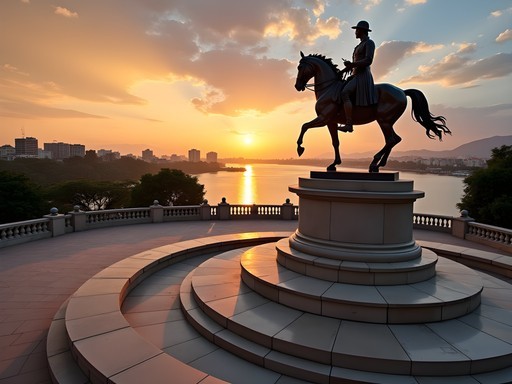
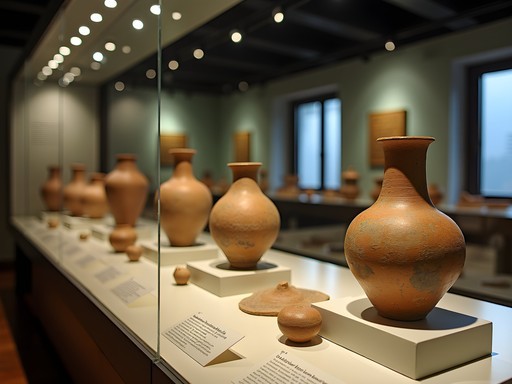
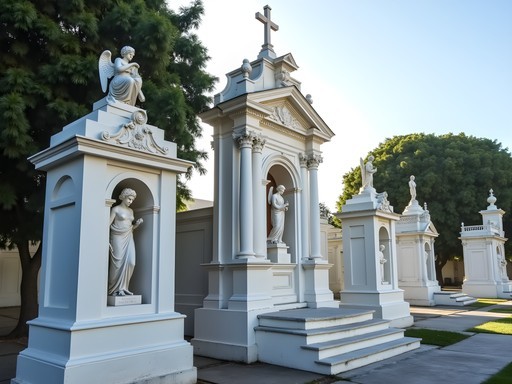

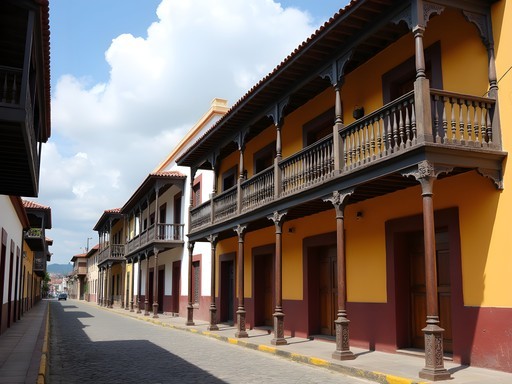


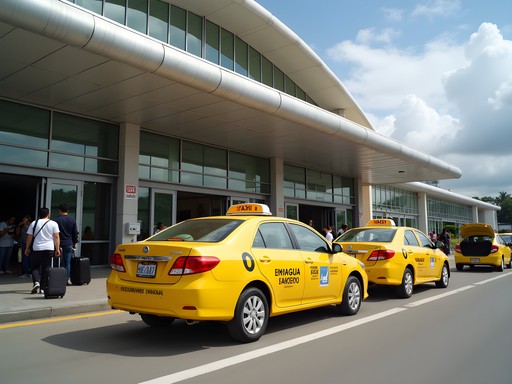







Comments
Jean Wells
Jennifer, your article inspired me to revisit my notes from Guayaquil. I spent three days there in 2019 and found the Museo Municipal particularly impressive. The pre-Columbian artifacts were extraordinary, yet I was often the only visitor there. One addition I might suggest is the MAAC (Museo Antropológico y de Arte Contemporáneo) - their collection of archaeological pieces from coastal Ecuador provides fascinating context to the city's history. Also, for those visiting Las Peñas, I recommend going around sunset when the light makes those colorful buildings absolutely glow, and the heat is more bearable for climbing those infamous stairs!
Jennifer Rodriguez
Jean, thank you for mentioning MAAC! I debated including it but was trying to keep the list focused. You're absolutely right about it being worth a visit. And the sunset tip for Las Peñas is spot on - the golden hour there is magical.
happyclimber
Going to Ecuador next month and might have a day in Guayaquil. Is it easy to get around to these places using public transportation?
Jennifer Rodriguez
Hi happyclimber! Most of these sites are actually within walking distance if you're staying downtown. For Las Peñas and the Malecón, you can easily walk. For the cemetery, I'd recommend a taxi as it's a bit further out. The Metrovía bus system is efficient but can get crowded - it'll get you close to most sites though!
happyclimber
Thanks Jennifer! Walking and occasional taxis sound perfect. Can't wait to check out the Rotonda monument - history buff here!
nomadclimber
Las Peñas looks gorgeous in your photos! Those colorful buildings remind me of Valparaíso in Chile.
moonphotographer
This is such a refreshing take on Guayaquil! I visited last year and totally missed most of these spots because I was just using the city as a jumping-off point for the Galápagos. The Cementerio General looks absolutely fascinating - those sculptures are incredible. Wish I'd known about these hidden gems before my trip! Las Peñas was the only place on your list that I managed to visit, and those 444 steps nearly killed me in the midday heat, but the view was worth it!
Jean Wells
I had the same experience initially - just using Guayaquil as a transit point. It wasn't until my third visit to Ecuador that I gave the city proper attention. The cemetery is truly remarkable, especially in the early morning when the light hits the marble sculptures.
moonphotographer
Early morning visit is a great tip! Did you feel safe wandering around the cemetery area?
Jean Wells
I went with a local guide which I'd recommend. The cemetery itself is safe during visiting hours, but the surrounding neighborhood requires some caution. I used this guidebook which had excellent safety tips for each Guayaquil neighborhood.
journeybuddy
Just climbed all 444 steps at Las Peñas yesterday following your recommendation! The view was INCREDIBLE and the colorful houses made for amazing photos. Found a tiny café at the top with the best empanadas. Thanks for the inspiration Jennifer!
oceanmood8976
Just got back from Ecuador and wish I'd seen this post before! We only spent a day in Guayaquil before heading to the Galápagos. The Malecón was nice but seems like we missed all these historical gems. Next time for sure!
beachguy
Same happened to us last year! Used Guayaquil just as a stopover. Big mistake apparently!
greenvibes
Love this! Never considered Guayaquil before.
Kimberly Murphy
Jennifer, you've captured the soul of Guayaquil beautifully! I stumbled upon La Rotonda monument last year completely by accident and was blown away by its historical significance. For anyone planning to visit, I'd recommend taking the local Metrovia bus system - it's incredibly efficient and gives you a real feel for local life. I navigated it using offline maps which was a lifesaver when cell service was spotty. The Museo Municipal was a highlight for me too - those pre-Columbian artifacts are incredible and the staff are so passionate about sharing their knowledge!
journeybuddy
Did you feel safe on the Metrovia? I've heard mixed things about public transport there.
Kimberly Murphy
Totally safe during daylight hours! Just keep valuables secure like anywhere. The buses are modern and have dedicated lanes so they're actually faster than taxis during rush hour.
journeyzone
Bookmarked for my trip next month! Thanks!
Jennifer Rodriguez
Enjoy your trip! Feel free to message me if you have any specific questions about these sites or others in Guayaquil!
journeyzone
That's so kind, thanks! Will definitely reach out if I need advice.
beachguy
Those colorful houses in Las Peñas look amazing! Adding this to my bucket list!
Venture X
Premium card with 2X miles, $300 travel credit, Priority Pass